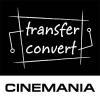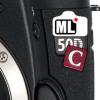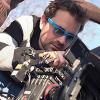Leaderboard
Popular Content
Showing content with the highest reputation on 04/02/2014 in all areas
-

Surprise! Sony Alpha A6000 video mode huge improvement
Ratguity and 2 others reacted to Andrew Reid for a topic
Sony A6000 with Zeiss 50mm F1.4 on Speed Booster The Sony A600 is the best Sony consumer camera yet for video. A Nikon D5300 in a mirrorless body, with far more features, the image quality is closer to the FS700 in 1080p than to a NEX 7 or A5000. The pristine sharp EVF, a magnified focus assist which can be activated whilst recording (rare!), peaking, zebra, 16:9 screen and of course the mirrorless form factor. This is arguably the best current 'cheap' camera for video, de-throning the GH2 and GH3. At just $650 it is an absolute bargain. Read the full article here3 points -

Panasonic GH4 4K Production Diary - Day 2 - Test Footage
Ernesto Mantaras and 2 others reacted to Andrew Reid for a topic
You're making it sound only about the lens. What about the nut behind the camera!? The 18-35 is very nice, almost as sharp as the Cookes.3 points -
They have a variable power diopter in front of normal anamorphic elements that are fixed set at infinity focus. The variable diopter consists of a Plano-concave lens all the way towards the front then a Plano-convex lens then the anamorphics. The focus ring moves the the two Plano lenses closer and further apart varying there power. When the two Plano lenses are touching they have a 0 power when at their max they have a .5 power in the case of the iscos. The design and concept is simple but finding lenses large enough to work on anamorphic adapters is not easy. I have tested and seen this first hand on an isco and with some cheap demostration lenses and was able to make it work with a Kowa. It worked in concept but the quality was not so good. Also in theory the lenses I used should have had a 0 power when together but they didn't so it lost infinity focus.3 points
-
Some time with the SLR Magic Anamorphot 1.33x - 50
nahua and one other reacted to stoneinapond for a topic
when someone says movie i think of movie. i repeat nobody is gonna make a movie motion picture with this new optic. why would you. it does not make any sense. if your making a 1000 dollar movie ok maybe. but that is not gonna be a film a movie a motion picture. that is gonna be a you tube clip. I'm not sure your thinking movie is in any way relevent. Have you even tried it? The adapter is a very acceptable piece of glass that relies almost exclusively on the look of the taking lens. Put on some stellar optics, and the Anamorphot rewards with stellar results. Test it yourself before blowing FUD. With a script, some money and a great taking lens, you absolutely could shoot an indie movie that would be worthy of the best art houses.2 points -

Panasonic GH4 4K Production Diary - Day 2 - Test Footage
Ernesto Mantaras and one other reacted to Andrew Reid for a topic
Nice! Colours look natural. Wow what a difference. New slogan for GH4 - "I can't believe it isn't raw!"2 points -
Sounds about right dhessel- what we'd expect from 8.67 bits and no sensor-provided increase in DR. HurtinMinorKey- is there an error in the math? Only green gets 2x unique samples in the Bayer array, red and blue are 1/2 resolution; Y is R*.3 + G*.6 + B*.1; only Y gets 4 samples to combine vs 1 for U and V in 420. If on-camera debayer is very good, the low res R and B will be better than 1/2 resolution, however at best we are still looking at 8.67-bit YUV after downscaling. After conversion to RGB, it will be somewhat less than 8.67 based on how good the debayer method performs. Thus not being able to see a difference matches what the math predicts.1 point
-

How do single focus anamophic lenses work
Lucian reacted to JohnBarlow for a topic
Referring to ISCO patents, the trick is in the balance between lens curvature and glass index, and, unfortunately, that's where things start to get expensive. Custom glass with custom index is very pricey. Some time ago a poster asked about replacing the front glass on a 54. After some enquiries, out of curiosity, I discovered for this size optic the mould fee would be about $1500. Made from cast iron the quality would be bad at 60-40 scratch dig, so would need further tooling costs to polish it down to an acceptable 20-10. Basic conclusion was that it would be cheaper to purchase another 54 after all the messing about.1 point -

Focus pulling options for handheld steadicam?
Sean Cunningham reacted to Hans Punk for a topic
Yes, this is doable at a pinch...like you say with bigger rigs. I used to own a Stedicam 'SK2' and you could just about get away with it on that, as the weight of the the sled + ENG camera + ISO arm would be great enough to carry some slight external attachment. I only did it twice with a BNC cable coming from the back of the camera, being 'cable bashed' by an assistant whilst I was operating. Even that was a real hassle, as the gimbal is so precisely balanced, any slight tug from the weight of the cable would effect the pitch of the steadicam. A handheld stabiliser would be even worse, as the only isolation of of movement is within the gimbal, anything to offset its balance - no matter how slight will cause problems. By attaching any external tether/ focus whip to a steadicam (or similar), you are effectively making the isolated stabilisation null and void. The good news is that many applications of fixed focus steadicam can be done with success, With a wider lens it will help smooth out any visible bumps, as well as keep everything at a sensible depth of focus. Anything other than wide angle on a handheld stabiliser is going to start to reveal the limitations of the single gimbal design IMO.1 point -
Hey, So you would rate this camera above the GH2 and GH3 in terms of image detail. But how do you like the IQ in 60p? I am looking for something cheap to shoot slow motion (since the Pocket Camera clocks out at 30fps) and this Sony could fit the bill I guess. Also do you know if the EU version has 60p/50p or both?1 point
-
Great news. Sounds like a perfect cheap solution for both audio stills and video. Im very tempted to buy this and wait for 4K to become mainstream. Shame it has no mic input... what would be the easiest/cheapest solution for external audio? Something like a zoom recorder and then sync it with the internal audio?1 point
-
Some time with the SLR Magic Anamorphot 1.33x - 50
Sean Cunningham reacted to stoneinapond for a topic
Oh my, what a silly little man. Funny realy. Like all cowards, when confronted with your ignorance you reply with child-like gibberish hoping the response gets you out of the hole you keep digging for yourself. Watch out for the earth coming down on top of you. Dead and buried..... In the meantime sunshine, give us some more comedy. I'm bored today.1 point -
I'm a bit worried sharing these, mainly because I'm paranoid I did something wrong on my end, regardless, I think it's good to share. First, I think the shot I used is a "worst case scenario" type of shot - because the shot itself is of a bland, bright sky that contains strong highlights and deep shadows (a real killer for 8-bit codecs as many of you know). Second, I think it reminds us that there is nothing like a true 10-bit codec, as opposed to 8-bit 4K being down-sampled to 10-bit 1080P (which in theory, works, but I think in reality it seems to fall apart somewhat - again, this may be a fault on my end). All in all, I think people shouldn't even begin to pass judgement on the GH4 until we see how it record in true 10-bit. I really hope that someone can show us true 10-bit out of the GH4 soon! I'd love to use the 10-bit 1080P at 60FPS that the GH4 is capable of to complement my Blackmagic Pocket Cinema Camera for slow-motion shots :) Anyway, here are the shots I spoke about above. I simply imported Andrew's 4K ProRes file into Premiere Pro CS6, and did a light "Shadow/Highlight" recovery to see what kind of data I could get out of such an extreme shot - and guys, please remember that it is an extreme shot as it contains both strong highlights and deep shadows - I think any camera would struggle in this situation to be honest. However, the increase in colours that 10-bit brings would have definitely helped in the gradation I think. Also, I should point out - these are 8-bit JPEGS, however, I did render the shots as "Uncompressed 10-bit YUV" (by way of Blackmagic's Premiere Pro rendering preset for Premiere CS6), and the results (in regards to the gradation) were the same. Anyway, enough of my ranting and raving, here are the shots: ORIGINAL ATTEMPTED SHADOW/HIGHLIGHT RECOVERY1 point
-
Panasonic GH4 4K Production Diary - Day 2 - Test Footage
jonpais reacted to johnnymossville for a topic
off topic a bit, but I was humming the song last night when I went home and my wife started to sing it, in chinese. She would sing it to her dog as a kid. I thought that was pretty cool.1 point -
Panasonic GH4 4K Production Diary - Day 2 - Test Footage
jonpais reacted to johnnymossville for a topic
@jonpais personally, I love panasonic colors.1 point -
Panasonic GH4 4K Production Diary - Day 2 - Test Footage
nahua reacted to johnnymossville for a topic
Here's my take on the Andy shot. Simple white balance correction and some minor adjustment of the master levels.1 point -
Ah nice! Mine arrived today: Maybe i´ll try your trick with my Leicas :) ------------------------------------------------------------------- Btw: VD did a great job. Very solid. And i was lucky because i just waited about 3 weeks ;)1 point
-
That was my first thought when I saw this porsche shot. For many commercial projects, though there is a demand for bright image with vivid colors (not so extreme/rough like in my example, of cause). @jonpais: just experimenting with this technique http://juanmelara.com.au/the-summer-blockbuster-colour-grading-tutorial/1 point
-

Panasonic GH4 4K Production Diary - Day 2 - Test Footage
Paolo Artuffo reacted to Andrew Reid for a topic
No, not the flattest possible. I left CineLikeD on default contrast settings (middle 0, not -5). I generally prefer not to have too flat an image in an 8bit codec, because you have to push it further in post. That usually results in more banding and more break-up. I have just downloaded some Alexa ProRes from Arri's FTP server. Anyone want a go at grading that against the GH4 ProRes? First I recommend you downsample the GH4's ProRes LT from 4K to 2K and convert to 444. These files LT files are here - https://www.copy.com/s/EoeMcoA2T9L4 Then download the 2K Arri ProRes and compare. Unfortunately the Arri material is mega boring shot wise... just some old dude playing a xylophone! But colourists might enjoy the experiment. The GH4's 4K H.264 makes for a very weighty 2K ProRes image for grading, me thinks. Arri FTP details are here: http://www.arri.com/camera/digital_cameras/learn/alexa_sample_footage/ Server: ftp-footage.arri.de User: ALEXA Password: samplefootage1 point -
1 point
-
Anyone can recommend wedding videographer + photographer?
Amro Othman reacted to dafreaking for a topic
Likewise!1 point -

quick Diopter changes
nahua reacted to Sebastien Farges for a topic
Yes me, it's working perfect ! I have also put it on variable ND, so I can put the diopter alone, the ND alone, or the diopter + the ND. It's enough strong to carry all this, even with my heavy achromatic diopters.1 point -

Anyone can recommend wedding videographer + photographer?
Amro Othman reacted to Zach Ashcraft for a topic
Buy me a plane ticket and I'd be HAPPY to shoot it :)1 point -
Focus pulling options for handheld steadicam?
Nick Hughes reacted to Pascal Garnier for a topic
Sean & John, take this nonsense to private messages please.1 point -

Panasonic GH4 4K Production Diary - Day 2 - Test Footage
Orangenz reacted to Andrew Reid for a topic
Like I said in the blog, the sunny shots and highlights are not optimal because I exposed too far to the right. Very little is blown out but they could have benefitted from coming to the left a bit. Believe me the roll off is smooth and the dynamic range is very wide on this cam. The pink comes from my grade. If I wasn't in such a rush to show it to you, I'd have spent another 6 hours on it and put it through Resolve or something :) Furthermore, still experimenting with what picture profiles to use, though I love what CineLike D is giving me so far, despite having a name like a vitamin supplement.1 point -
Panasonic GH4 4K Production Diary - Day 2 - Test Footage
Andrew Reid reacted to Inazuma for a topic
Very nice :) I'll be in Berlin from Thursday to Sunday with my GX7. Going to see if I can get to that park; looks like a great spot!1 point -

Panasonic GH4 4K Production Diary - Day 2 - Test Footage
estarkey7 reacted to Guest for a topic
Amazing level of resolution. As Andrew said it looks like a moving photograph. Really shows-off the quality of the lenses. The image looks promising in other ways too. Are we going to see a lot of indie features shot on this camera? Is it a realistic alternative to Blackmagic for low budget cinema? Does it lend itself better to documentary/freeform work? Predictions?1 point -
Looks iiiinnnncredibe. Wow. Fantastic job.1 point
-
Andrew Reid and Frank Sauer shoot with the Panasonic GH4 - Production Diary Day 1
Andrew Reid reacted to MatthewP for a topic
Wow guys... :rolleyes:1 point -
g6 is way superior to gh2 in low light gone is all the fizz noise in the blacks Ive swopped from gh2 to using g6 now and the whole camera is much better then the gh2 the screens are superb the evf is amazing cant work without it now the iso's are all alot cleaner now alot less noise focus peaking is great I leave it on all the time now and the remote wifi control of the camera on your iphone is unreal I can pull focus and stop start recording change the iso etc etc all via wifi with the camera 100 feet away on a jib arm ! the panasonic image ap is free and very very useful!! g6 is the way to go1 point
-
If you already have good MFT glass then the BMPCC is perfect (compared to others) for that application. The only thing that really bothers me about the BMPCC is the moire that appears in DNGs when the image is too bright and sharp. I doubt that will be an issue with what you want to shoot. On the plus side, in low-light RAW based cameras become grainy, H.264 cameras become blotchy. When you shoot with any of the cameras above you'll get a nice, smooth image. But your blacks will be crushed. To see the difference in images lease look at these two shots I too with a H.264 and RAW based camera http://maxotics.com/?p=146 The BMPCC also need the fastest SD cards, plan about $50 per 32GB at current rates. Not a good camera to shoot long-form stuff; that is, leave camera on for an hour. In general, any RAW based camera will require at least 4 times the money, time, effort, etc. Out of the box, the video from a GH3 is, say, 10 times better than the image from the BMPCC. And it will stay that way unless you put 10 times the effort into the RAW based video. However, if you do that, then the BMPCC will end up 10x better than the GH3. All depends on what trade-offs you want to with your time.1 point
-
What kind of big jobs? On the wide angle, there is the panny 7-14mm. I read somewhere that ultra-wide lenses are physically wide angle optics attached to telephotos, that the lens gets a wide angle then has to enlarge it to make it through the distance to the sensor. This makes sense to me. I find the quality of ultra-wide angles made for aps-c or ff to be somewhat soft. If you're not doing much photography then seems to be you should just get a MFT wide-angle. I would think it would give the best quality on any MFT camera. My guess is that is has to do little, if any, "telephoto" work onto the image to get it to the sensor.1 point
-
Blackmagic line immediately jumps to mind as the cheapest option. You are right in that dynamic range will be your friend in that scenario. Canon C100 maybe? A bit out of your range, but good dynamic range/overall image and very friendly to long recording times. I think some of the newer Nikon DSLRs (5300, 7100) also have pretty decent dynamic range as well.1 point




